How to plan a new garden with detailed advice about effort, sun, soil, deer, rabbits, trees, shrubs, perennials, bulbs and annuals. With careful planning, you can have a new garden that will thrive!
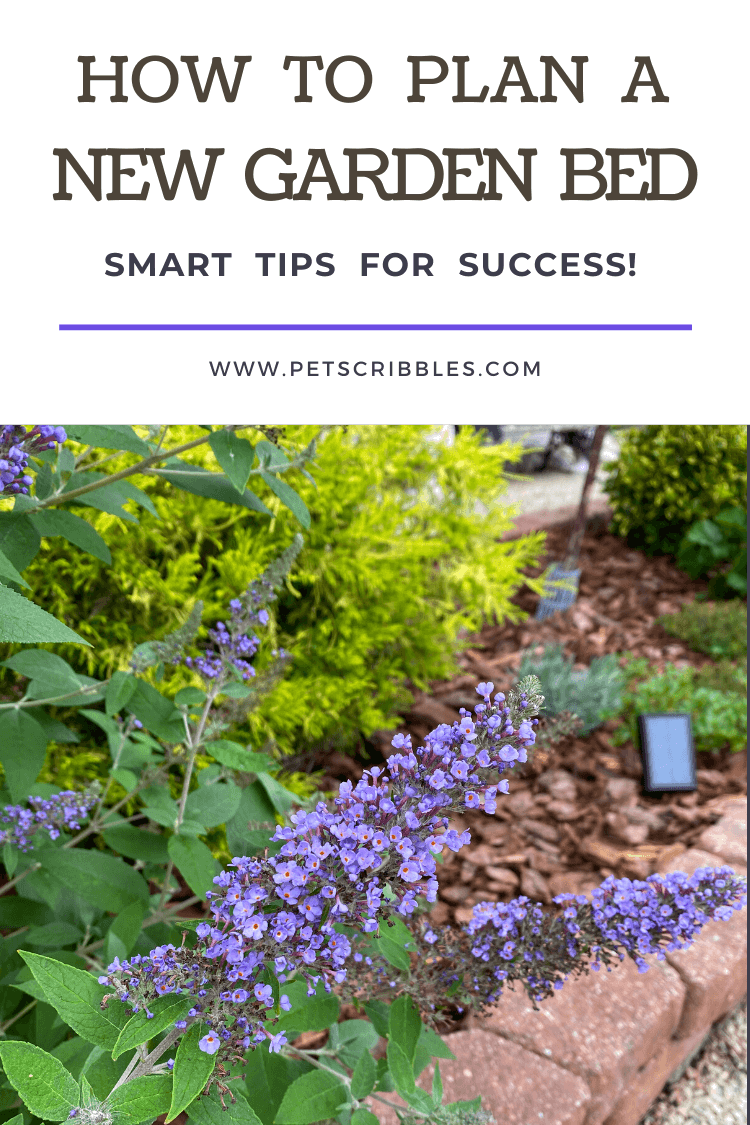
Planning a new garden — especially when you’re starting from scratch or are new to gardening — can seem overwhelming! But the word *planning* is key here. There are many questions to answer before you begin to choose your favorite plants and flowers. So the simple *how to plan a new garden* question easily gets broken down into smaller topics.
What is the soil quality of your chosen garden space? Does it get full sun? Are deer or rabbits an issue? And perhaps most importantly: how much effort do you plan on putting into your garden? Effort includes not just planting the shrubs and flowers, but also ongoing maintenance of your garden — weeding, fertilizing, deadheading flowers, pruning, mulching and so on.
I’m two paragraphs into an article titled *How to Plant a New Garden* and I still haven’t mentioned how to choose trees, shrubs, perennials, bulbs and annuals. And there’s a reason: choosing trees, shrubs and plants needs to occur after all of the above questions are answered. Armed with the answers, you can enjoy picking out plants that will thrive in your garden!
Table of Contents
- Garden size doesn’t matter!
- Effort — How much work do you want to do?
- Plant Hardiness Zones
- Sun and Soil
- How to plan a new garden with deer and rabbits
- How to plan a new garden by choosing the right plants
- Trees and Shrubs
- Perennials for a new garden
- How to plan a new garden with bulbs
- Annuals to fill in your new garden
- My video tour of my new garden bed
Garden size doesn’t matter!
These tips work for any garden space where you want to plan a garden. In other words, size doesn’t matter. What does matter is learning about your potential garden space first. And secondarily? The order in which you plant your trees, shrubs and flowers matters.
As I guide you through each section, I’ll reference my own new garden bed which I planted this year. I also have a video at the end of this article where I take you on a garden tour of my newest garden. I hope you’ll watch!
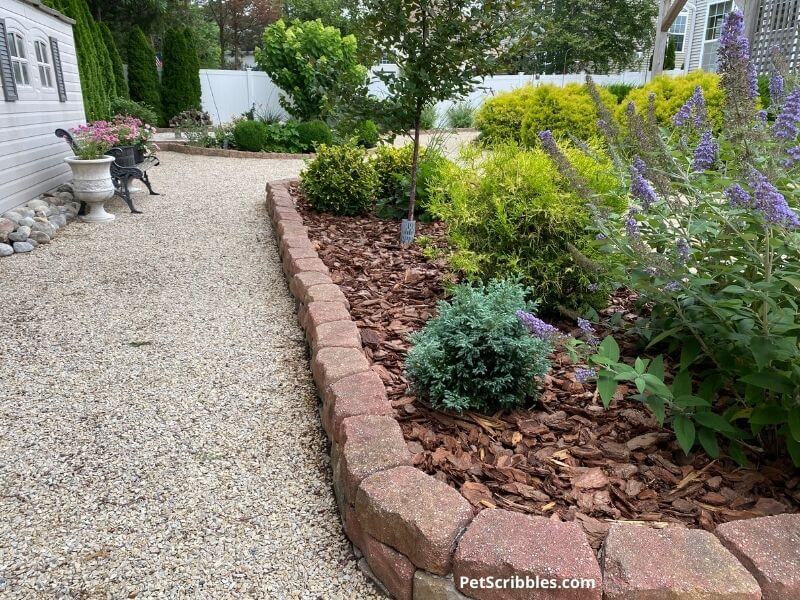
Effort — How much work do you want to do?
I present this question first to give you something to keep in the back of your mind as you go through this article. Putting effort into planning a new garden includes many different garden chores. Your work is not completed once you plant your chosen shrubs and flowers. It’s just beginning. Gardening is a long-term commitment, and for many of us it is an enjoyable hobby that turns into a lifelong passion.
But what if you want an almost hands-off garden? There are many trees, plants and flowers that require minimal care. But there’s no way around it. You will have some regular garden chores to do with your new garden. Weeding and watering are two of the basics. And weeding can be very therapeutic, but not so much when it is 98 degrees out with high humidity. There’s also periodic fertilizing, deadheading flowers, pruning and mulching. And don’t forget Fall cleanup and Spring cleanup.
When we are younger, or just starting out with a garden, we may embrace all of the various garden tasks we must do. But when we are older, we instead may prefer a garden that is lower maintenance. And of course our own needs can change over time due to any number of circumstances including injuries, health changes, illness and age.
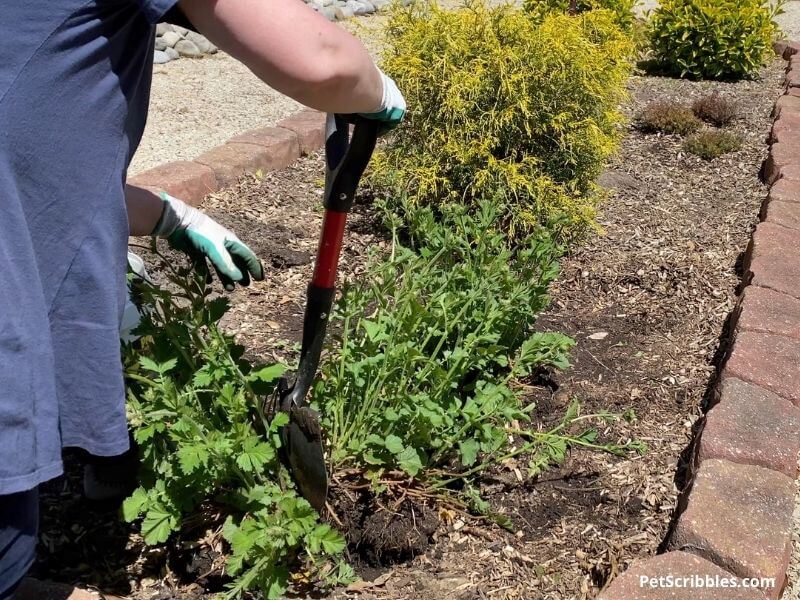
Effort becomes important when you’re planning a garden, especially when it comes time to choose your plants. Some shrubs require a lot of work to keep them looking their best, while others look wonderful with very little effort on your part. Certain perennial flowers are planted once and they’re good for many years. Other perennials have to be divided every few years.
As you are learning how to plant a new garden, periodically think about what you will and won’t enjoy doing. Being aware of what you hope for your own garden will help you in many ways. But there will always be unexpected surprises in gardening. Plants that need to be dug up and moved, a perennial that for some reason dies or a rainy Summer which enables black spot or fungus to hit some of your beloved flowers can happen. Mistakes happen. And that’s ok, because a garden is constantly evolving and changing. We can make mistakes and so can Mother Nature sometimes! Just keep all of this in the back of your mind. Gardening is more than just planting plants.
Plant Hardiness Zones
What garden zone am I in? What is my hardiness zone? Every gardener will ask these questions at one time or another. Thankfully with the internet, figuring out your garden zone has become much easier.
An important fact to know: Hardiness zones specifically help you determine which plants will survive the Winter season in your area. These hardiness zones don’t reflect anything more than that. In other words, your hardiness zone doesn’t reflect your soil conditions, how much or little rainfall you area receives, and so on.
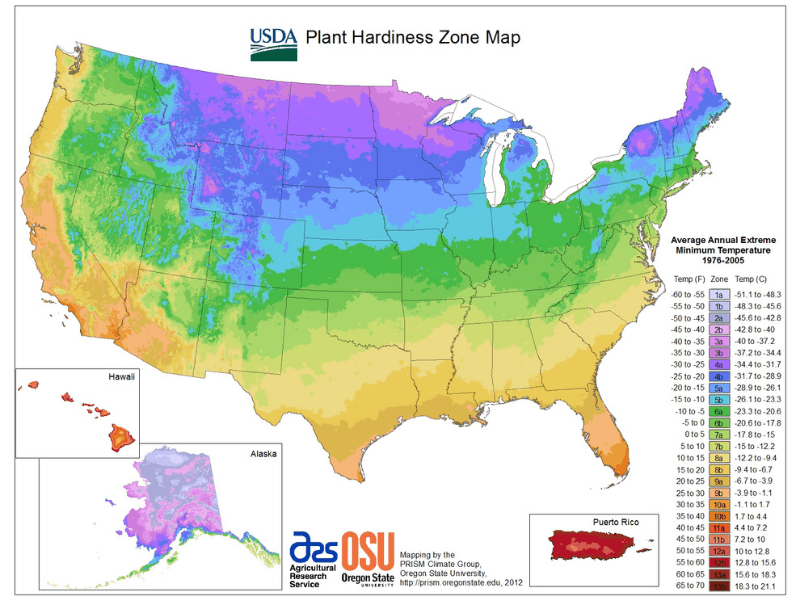
If you’re in the United States like I am, we go by USDA Plant Hardiness Zones. Here is a handy map you can use for reference from the US Forest Service. The map is interactive, so click around and learn about your specific garden zone. A helpful section, once you type in your zip code to find your specific zone, is the About page, which has more explanation on what the hardiness zones mean, in more specifics than this article aims to cover. I like the *Maps and Gardening* section.
Note: Don’t be alarmed that the USDA Hardiness Zone Map hasn’t been updated since 2012. This map is current. Major changes to the USDA hardiness zones don’t happen that often. For example, there was a major update in the 1990s, and then one in 2012 which is the most recent update.
I’m in zone 7 overall, for gardening purposes. Whether it is zone 7A or 7B isn’t too important, as all plant tags you’ll see at your local garden nursery or garden center will use whole numbers. In other words, the plant tags won’t say 7A or 7B. Here is a plant tag from Proven Winners for their Little Quick Fire Hydrangea shrub:
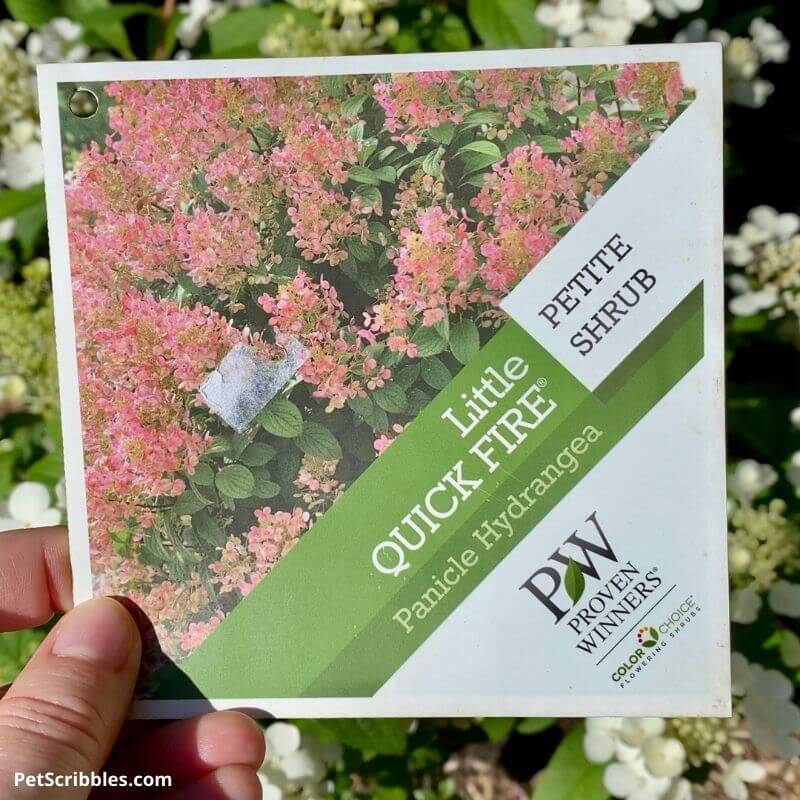
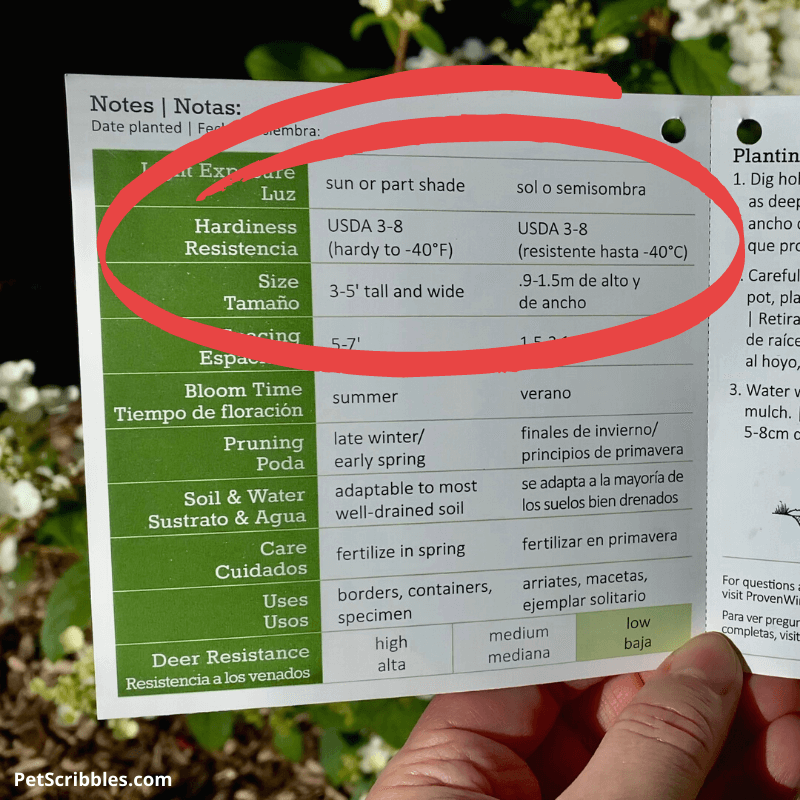
Notice the plant tag lists the hardiness of Little Quick Fire Hydrangea as USDA zones 3 – 8. This means for me that Little Quick Fires will survive the Winter — under normal conditions — in my gardening zone 7. It also means that anyone who gardens in zones 3 through 8 will be able to grow this shrub. Again, under normal conditions. There is never a guarantee with Mother Nature!
What about gardening zones outside of the United States?
I’ve listed some helpful links below for gardeners in Canada and Europe. There is also a link to a wonderful Wikipedia article on hardiness zones worldwide and how they relate to USDA hardiness zones.
Remember, your nearest garden nursery is also a great resource for determining your hardiness zone and which plants will grow well in your zone.
Sun and Soil
Where do you want to plant your garden? Once you choose the location and decide on the size, it’s time to figure out how much sun your garden will receive. Equally important is knowing what type of soil you have.
Sun
How much sun does your garden get during the day? A garden is considered in full sun if the space gets at least 6 or more hours of sun each day. If your garden gets between 4 to 6 hours of sun per day, it’s considered partial sun. And of course if your garden is sited in the shade, this is considered full shade. There are many beautiful plants that grow in full sun, partial sun and shade gardens.
And be aware that if you want to plant an ornamental tree or a larger tree, those trees will eventually provide shade to an area that was once sunny. It may take several years or longer, but again it is something to consider in your planning.
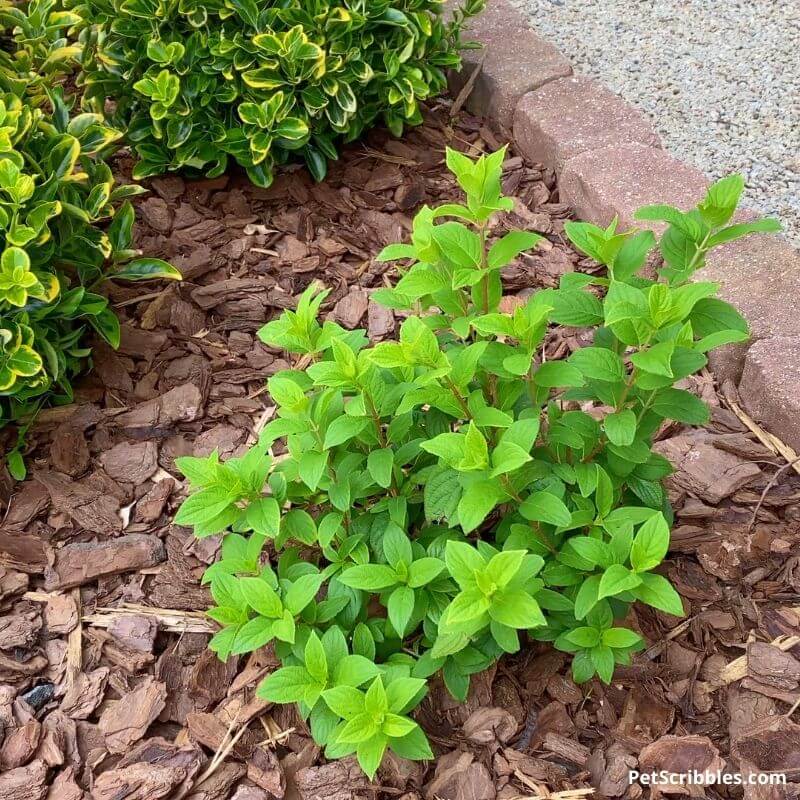
Soil
What kind of soil do you have? Most people have either heavy clay soil, or sandy soil, or something in between. In addition to figuring out which type of soil you have, it’s also helpful to know if your soil is naturally acidic or alkaline. Some plants do much better in acidic soil, while others prefer alkaline. Your soil can also be amended with nutrients to make your soil more acidic or more alkaline over time.
How do you know which type of soil you have? If you’re new to a neighborhood, ask a friendly neighbor — preferably one who has pretty gardens and will know the answer.
Otherwise, use this great reference from Garden Design: How to Prepare Your Soil for a Garden. It’s a comprehensive — yet easy to understand — article that walks you through how to know which type of soil you have in your garden, as well as how to test whether the soil is acidic or alkaline.
Another good resource is the book Grow Your Soil! Harness the Power of the Soil Food Web to Create Your Best Garden Ever by Diane Miessler. I love this book, as it explains how you can improve your soil without a lot of effort. Effort. There’s that word again! The book is an enjoyable read as the author presents the subject in a witty, engaging way.
Once you know how much sun you garden gets each day, and what type of soil you have in that garden, then it’s time to think about deer and rabbits.
I know — you want to get to the fun part of choosing plants! We’re almost there.
How to plan a new garden with deer and rabbits
This may seem like an odd thing to think about before you really get started, however this is a huge consideration if you have deer and/or rabbits on your property. If there are deer nearby, once you have plants they favor, you will start having deer visiting regularly. Same with rabbits. And to make matters more confusing, there are plants deer don’t like, but rabbits do — and vice versa. Lovely.
While there are many trees, shrubs and plants that deer and rabbits will munch on, there are many they will leave alone. The one caveat being that if deer and rabbits are hungry enough, they will eat just about anything available. Also, deer and rabbits can’t read. Otherwise we would all just provide them with lists of the plants we want them to avoid!
I’m fortunate to not have any deer to worry about, however I’m all too familiar with the frustration gardeners have with deer. For example, Hosta plants are like candy to deer. Plant them at your own risk. But deer will also munch on so many plants and shrubs that it is worth it — literally, money-wise — to do your research. A great reference for deer resistant plants is from Rutgers: Landscape Plants Rated by Deer Resistance.
Personally, when we first started our gardens here, there were rabbits but not anything to worry about. I was able to grow so many plants they prefer, yet they didn’t touch them. Fast forward 10+ years and the rabbits are now a major problem in our area. I’ve written about them before: Rabbits in the Garden: Pandemic Rabbits Eating Everything!
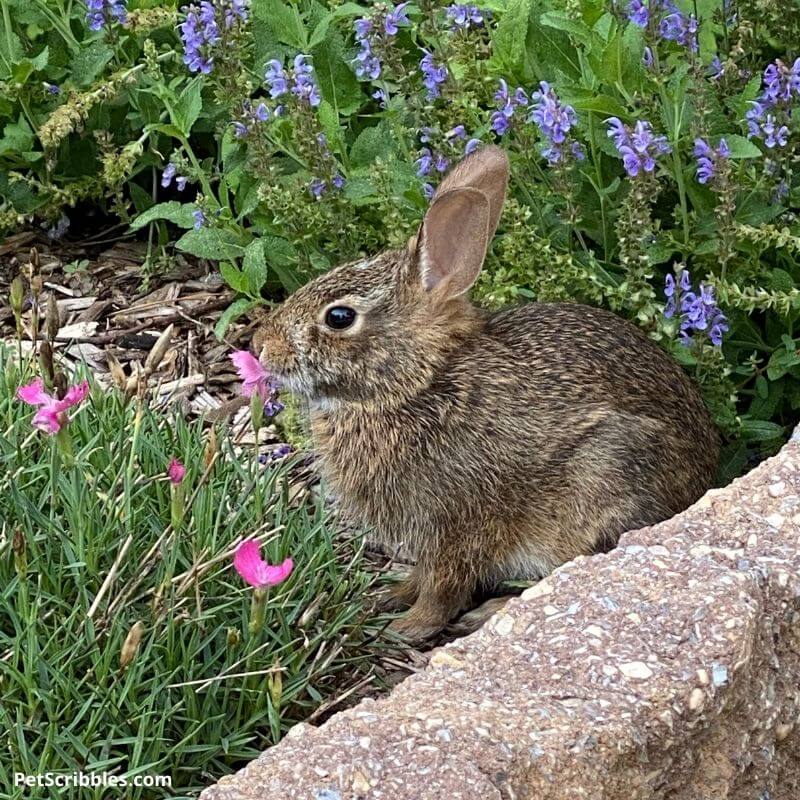
So now I have to really pay attention to which plants will work in our landscaping. It can be frustrating to get it right, but when I do find plants that work — such as Lavender, Catmint and Geum — I’ll plant them in several places. (This topic of rabbit-proof plants is something I talk about on my Garden Sanity YouTube Channel, so please consider subscribing if rabbits are also an issue for you.)
Rabbit-resistant plants in my new garden bed
In my new garden bed, the plants I chose are rabbit resistant. While the ornamental Crabapple tree I chose is not rabbit proof, I’m protecting the tree’s lower trunk with plastic tree protectors. I also plan to add rabbit-resistant plants and Spring bulbs around the base of the tree, which will help deter the rabbits.
How to plan a new garden by choosing the right plants!
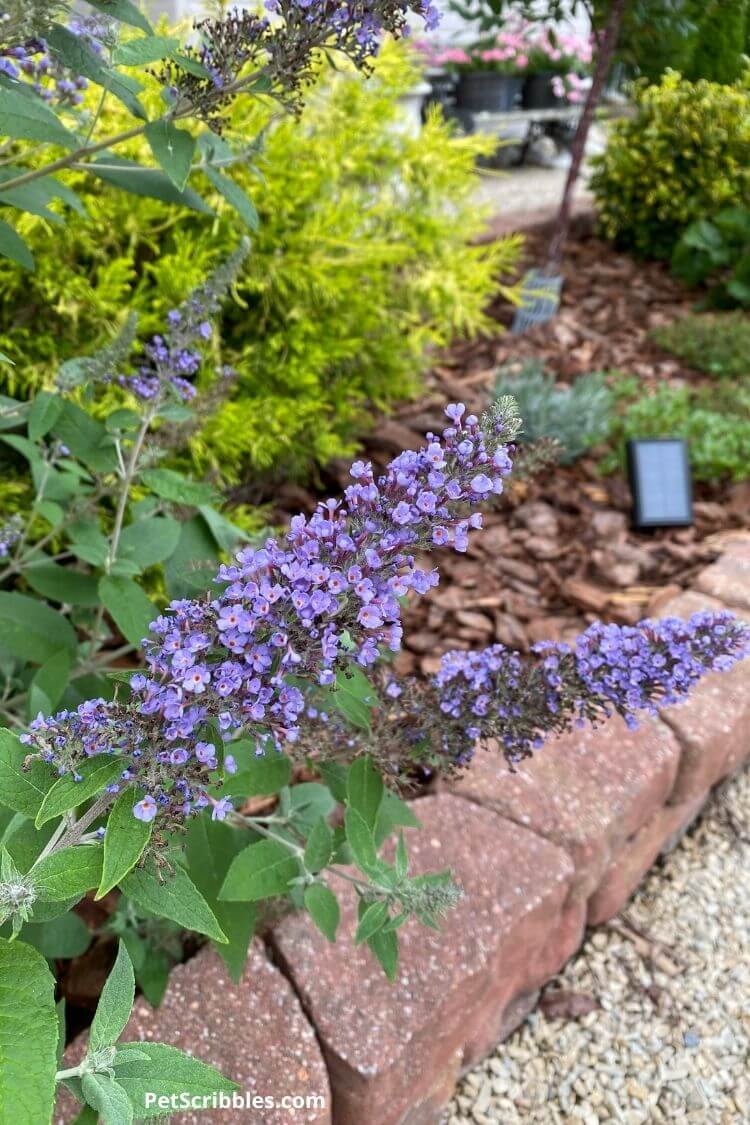
When building a garden, it’s a great idea to start with the foundation plants first, and those are going to be your trees and shrubs. Next should be perennials, which will come back every year just like your trees and shrubs. Third will be bulbs, which again can provide color and also fill in gaps in the garden, especially in late Winter and early Spring. Finally, adding annuals is the last step in how to plan a new garden. Annuals provide non-stop color and vibrant foliage that completes any garden bed, whether you add one or two annuals or a large display.
For trees, shrubs and perennials, you want a mix of evergreen and deciduous plants to keep it interesting. And if deciduous, does it have any Winter interest? Dried flowerheads, interesting tree bark, and colorful stems can provide much-needed Winter interest in what might be a bland landscape otherwise.
Trees and Shrubs
Trees and shrubs are the foundation anchors of any garden bed. If you have a tiny garden, you may not need — or want — anything larger than shrubs. If you have a large garden space, you may want large trees in addition to ornamental and smaller trees.
Trees and shrubs come in so many shapes and sizes and varieties, it is impossible to discuss them here. My favorite tree and shrub book is Dirr’s Encyclopedia of Trees and Shrubs. It is expensive, but worth every penny to me for the amount of information it provides. I use this book a lot!
There is a Kindle version of this book as well, which makes things much cheaper!
Trees
There are several things to consider when choosing trees for your landscape, including the basics of shape, size, and if they are evergreen or deciduous.
But dig deeper — pun intended — and think about bloom time for flowering trees. Do you want a Spring-flowering tree like a Dogwood or Weeping Cherry? Do you want a Summer blooming tree like a Limelight Hydrangea Tree?
Leaf color can be important too. Will you enjoy a vibrant show of Fall leaf color on the trees?
Evergreen color is more than just green, as there are many shades of green including pretty blue-green needled evergreen trees. And there are evergreen trees that have broad leaves instead of needles, such as Red Tip Photinia which also has beautiful white flowers in the Spring.
Doing your research should help you find exactly what you want. Visiting garden nurseries is also a way to see what trees are available in your area. I like to visit many nurseries to compare what is in stock, to ask questions and to compare prices.
Just remember: the small tree you purchase at the garden nursery may eventually become the large landscape tree of your dreams or nightmares. Be prepared for its eventual mature size.
Ornamental tree in my new garden bed
I chose a beautiful Prairifire Crabapple Tree for this garden bed. This crabapple variety has beautiful foliage that starts out deep red and gradually turns to a deep green. It is a Spring-flowering ornamental tree with dark pink flowers. The eventual height will be 15′ to 20′ tall. (The tree is indeed spelled Prairifire and not Prairiefire.) Prairifire develops small berries which stay on the tree itself much more than other Crabapple varieties. I hope this ends up being true, but if not — the berries will fall into the raised bed and not onto the pretty ivory gravel in our back yard. Another example of what needs to be considered when choosing a tree!
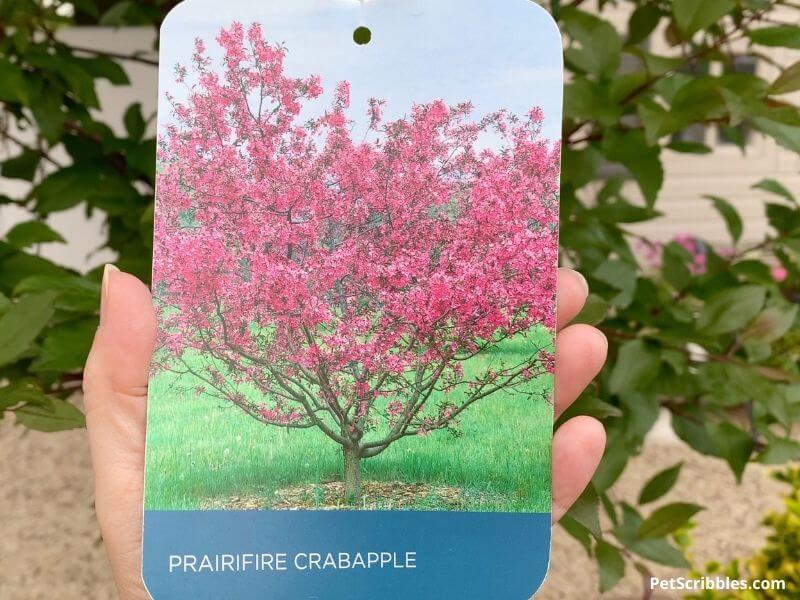
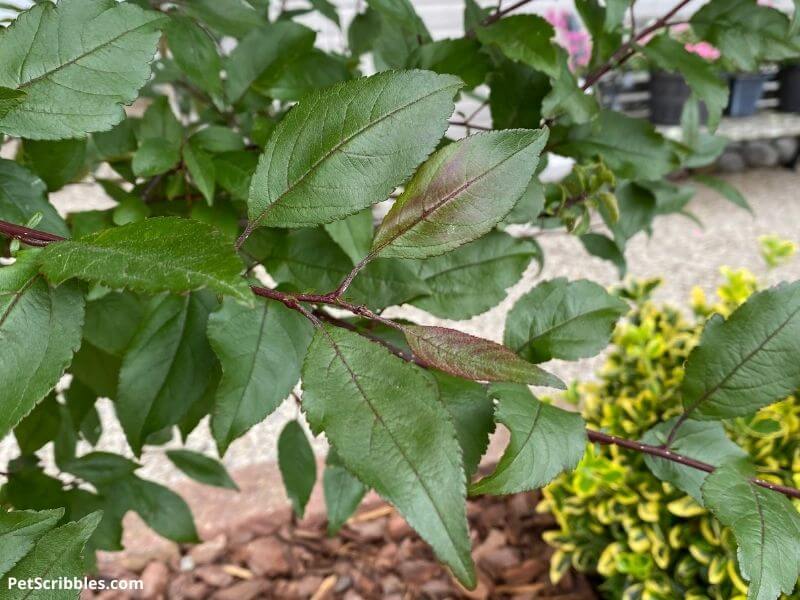
Shrubs
After choosing trees, next come the shrubs. Shrubs — just like trees — come in many shapes, sizes and colors. They can be evergreen or deciduous. Some are flowering, others have interesting leaves. Certain shrubs have beautiful Fall color while others do not.
A mix of both evergreen and deciduous shrubs will provide your garden with color year-round. Again, the size of your garden is not important, because there are little shrubs like the slow-growing evergreen Blue Star Juniper, as well as larger shrubs to consider.
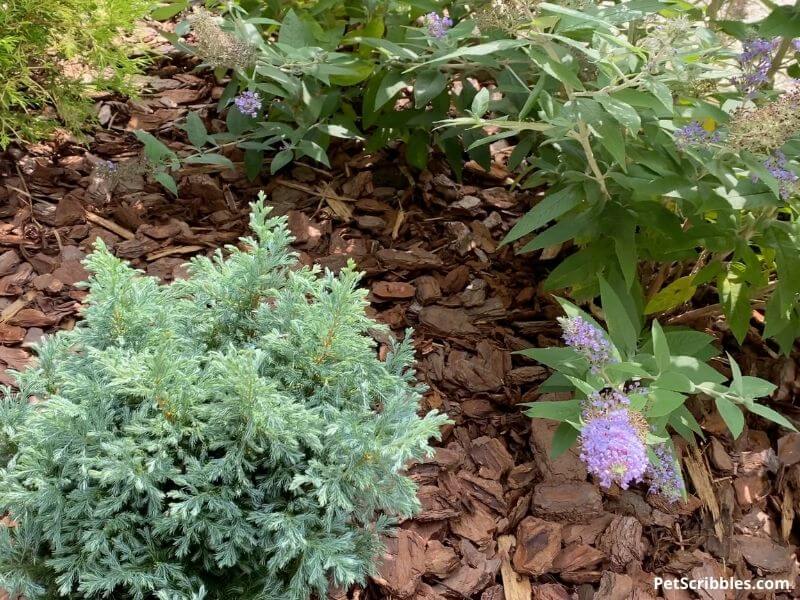
But paying attention to a shrub’s eventual mature size is important. For example, I just planted a Boulevard Cypress in our new garden bed. It looks like a small evergreen shrub right now, but its eventual height and spread will be approximately 5 feet tall by 2 feet wide. However it is a slow-growing evergreen. Knowing this helped me decide where to plant the shrub. (And you can watch my garden video at the end of this article to see exactly where I planted it and why.)
Evergreen and deciduous shrubs in my new garden bed
Before I began this garden project, I already had two Golden Euonymus shrubs plus a King’s Gold Mop Cypress in this bed. (It’s a not-very-long story, which is included in the video at the bottom of this article.) Since these evergreen shrubs are primarily gold, I added a Boulevard Cypress with silvery blue-green needles — similar in color to new Butterfly bushes planted nearby. Three small evergreen Kramer’s Red Winter Heaths were also planted. These have tiny fuchsia flowers in bloom from January through April.
The deciduous shrubs in this garden bed include two True Blue Butterfly Bushes and one Fire Light Hydrangea. The Summer-blooming butterfly bushes have pretty blue flowers with tiny orange centers. The Fire Light Hydrangea flowers in Summer as well. While my Fire Light is small and won’t produce flowers this year, I can’t wait to see what it looks like in the future as it grows nice and big.
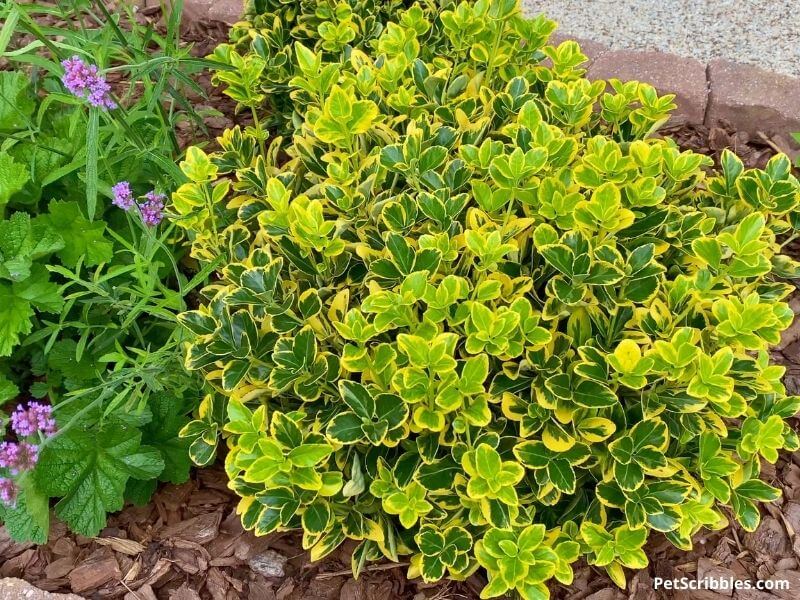
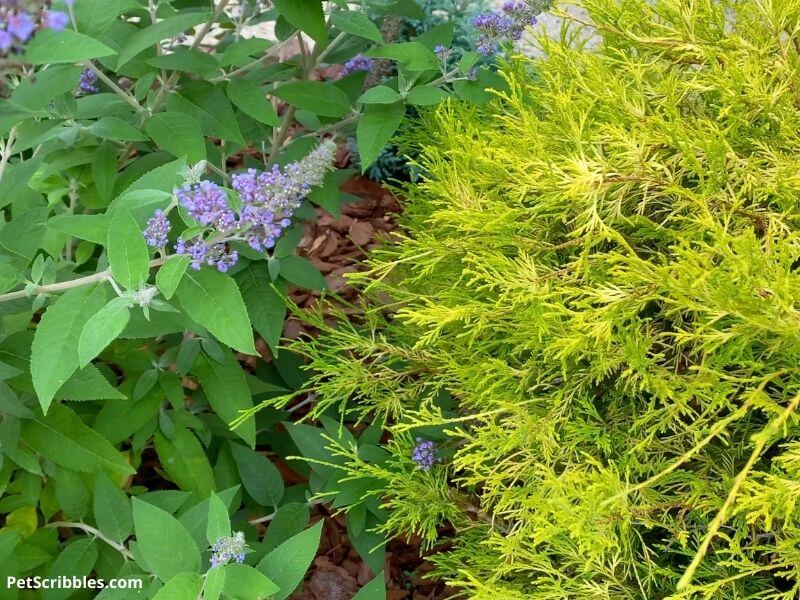
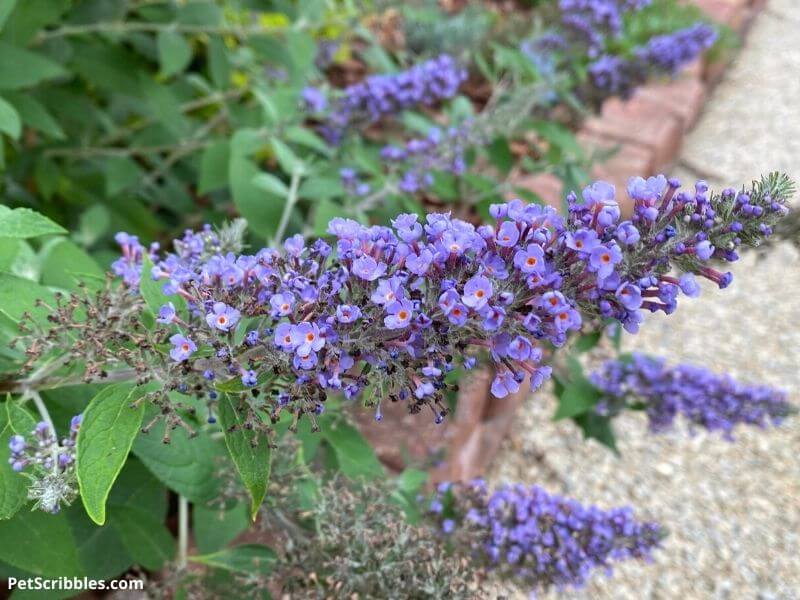
Perennials for a new garden
Helpful note: I’m located in southern New Jersey, zone 7 for gardening purposes. Certain plants that are perennials for me may be annuals for your gardening zone — and vice versa.
Once your trees and shrubs have been chosen and you’ve decided on their placement, you are ready to add perennials. And just like with trees and shrubs, perennials can be either evergreen or deciduous, and can be any size — from low groundcovers up to tall flowers that can pass for shrubs. Again considering eventual size is key.
I actually prefer planting perennials over annuals in general, because you plant them once and they will come back every year. Perennials are more expensive than annuals. However, I’d rather plant perennials once versus planting annuals to fill the same spot each year. The cost does add up over time.
The main features to consider for perennials are foliage and bloom time. As you can imagine, there are many different leaf and stem colors on perennials as well as flowers in practically any color you want. Some perennials only flower for a short time or during a certain time of the year such as Spring. Other perennials can be long-blooming and provide wonderful color for months.
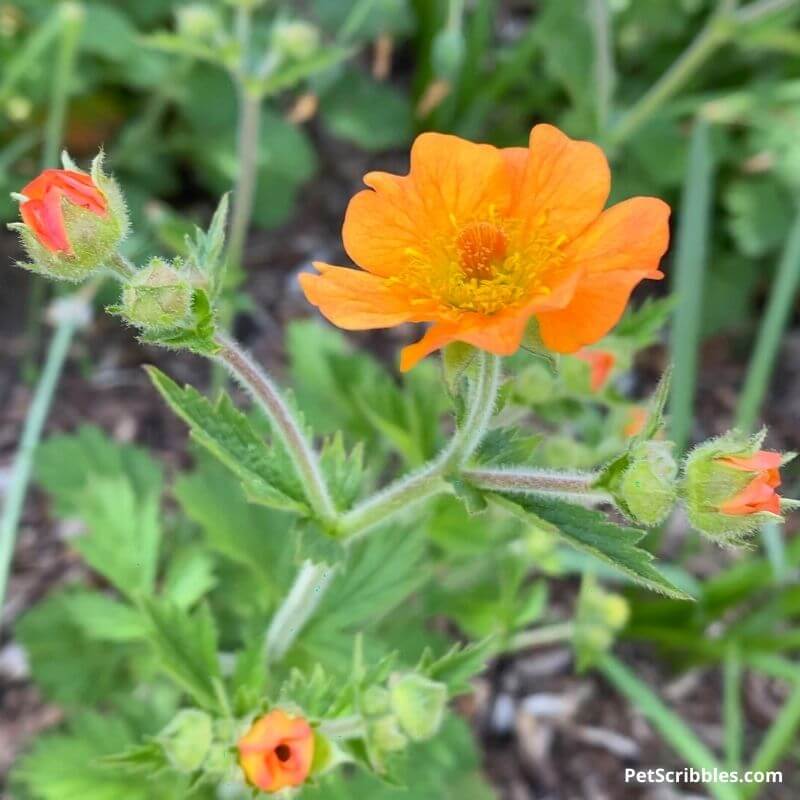
Evergreen perennials are my favorite, as you get both flower color to enjoy as well as Winter color in your garden. There are several examples of my favorites that you can read more about including (just click these links to read more): Lavender Phenomenal, Geum, Candytuft and Lithodora. I’m also a huge fan of Hellebores, which I’ve yet to write about but will in the future.
Deciduous perennials also have their place in the garden, and can provide fantastic color such as perennial Phlox, Coneflowers, Astilbe, Black Eyed Susans, and my favorite Kalimeris (also known as False Aster). Those are just a few of the giant selection that’s out there!
I have several perennial garden books that I’m always using, including: The Well-Tended Perennial Garden and The Perennial Care Manual: A Plant-by-Plant Guide: What to Do & When to Do It. There are many perennial books on Amazon that are specific to certain regions of the United States or even specific states. It’s worth poking around to find exactly what you need.
Perennials in my new garden bed
The perennials initially planted in this garden include Lavender Phenomenal, Totally Tangerine Geum, ornamental Alliums and Verbena Bonariensis. I plan on adding Hellebores around the ornamental tree. As there are millions of Hellebore varieties to choose from — at least it seems like it — I’ve got to narrow down what I want to buy. The foliage of both the Lavender and Geum are evergreen, which as I mentioned above is an added bonus for Winter color.
How to plan a new garden with bulbs
There are flower bulbs available not only for Spring color — like the traditional Daffodils and Tulips — but also for Summer and Fall color as well. While I am only personally familiar with planting Spring bulbs so far, I’m planning on adding Summer-blooming bulbs to my gardens this Fall including Alliums and Camassia.
Deer, rabbits, chipmunks and squirrels enjoy sampling bulbs, so it’s good to know which animals are around before you begin your bulb planting journey. I once planted 200 Crocus bulbs around a tree in our front yard. Hardly any came up because they were already dug up and eaten by chipmunks and squirrels. The next year, I tried a “Tommi” Crocus variety supposedly not liked by squirrels. Well, these squirrels can’t read and so they attacked them too. Meanwhile, the rabbits have devoured my tiny grape hyacinths. Know thy enemy!
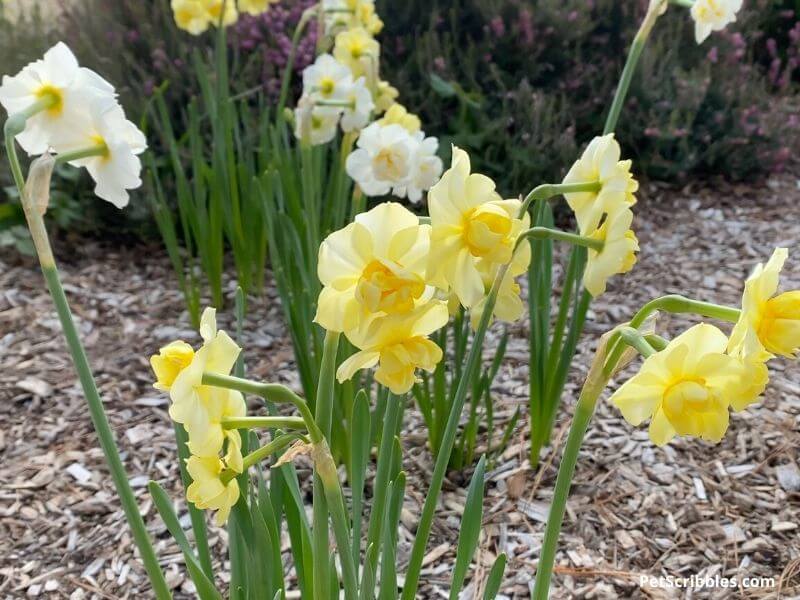
Bloom time is important with bulbs, especially Spring bulbs. With Daffodils, for example, you could plant early-blooming, mid-season bloomers, and late-blooming varieties to have months of color. I’m trying to do that with my own garden beds.
Two of my favorite bulb books which may be helpful to you — and which I have previously written about — are Bulb by Anna Pavord and The Kew Gardener’s Guide to Growing Bulbs. The Kew Gardener’s Guide is a small but information-packed little book that is also very pretty!
Bulbs for my new garden bed
This Fall, I’ll be adding Daffodil bulbs to the new garden. I’m going to plant varieties already in our other backyard garden bed so the beds look similar in the Spring. Click here to read about my favorite weather-proof daffodils. I’m also fond of Leucojum, better known as Summer Snowflakes. And Alliums. You can easily go down a rabbit hole — pun intended — when you start looking at bulb catalogs and websites.
Annuals to fill in your new garden
Helpful note: I’m located in southern New Jersey, zone 7 for gardening purposes. Certain plants that are annuals for me may be perennials for your gardening zone — and vice versa.
Once your garden has been filled in with the first three categories of plants — trees and shrubs, perennials and bulbs — then it’s time to take a step back and see where you want to add annuals.
Just like perennials, annuals come in many shapes, sizes and colors. Some provide wonderful leaf color like Dusty Miller or Coleus. And some provide flowers all season long like petunias and begonias. There are groundcover annuals that spread, and also climbing annual vines like Morning Glory.
There are gardeners who do amazing work planting their landscape with annuals every year. I see the photos they share on Instagram and am in awe of how beautiful their gardens are. I’m not one of those gardeners, mainly because I’m still in the *planting phase* of adding shrubs, perennials and bulbs around our property. Once I get to some as-yet-to-be-determined “happiness” with how my gardens look with trees, shrubs, perennials and bulbs — only then will I start to really enjoy adding annuals every year.
Don’t get me wrong — I do plant annuals each year. Just not that many. My favorite is annual Ageratum. I love it partly because the rabbits do not.
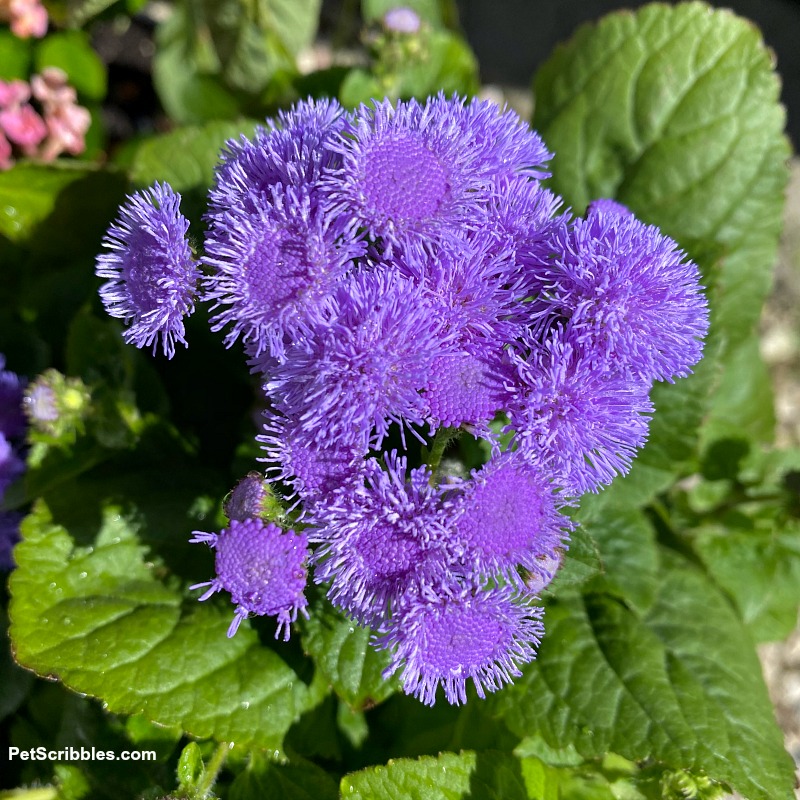
I tried annual Vinca this year, which hasn’t been happy in our humidity and heavy clay soil, except in certain areas of my gardens where it can remain on the dryer side. But it is another flower rabbits leave alone, and so next year I might try them in pots placed in the garden instead.
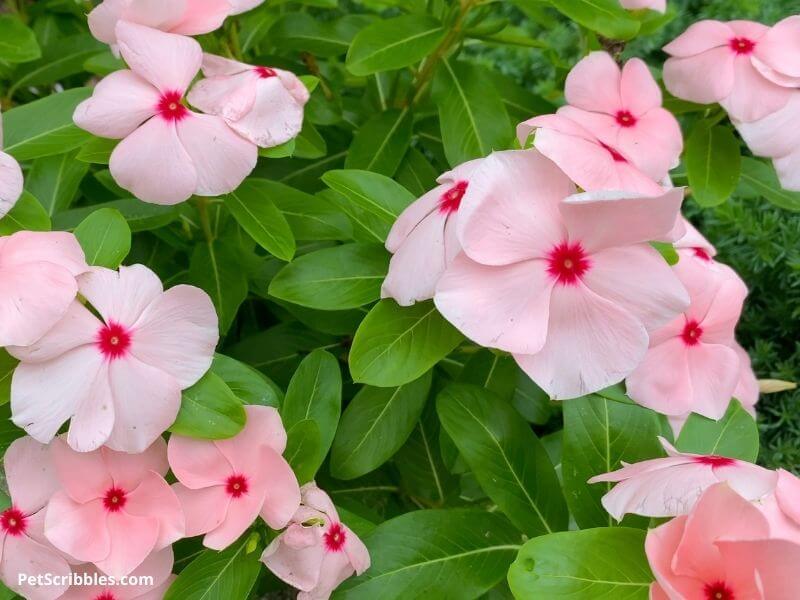
Annuals may be grown indoors first, then planted outside as seedlings. You can direct-sow many varieties of annuals, and of course you can purchase annuals at your local nursery or garden center. Again, it depends on how much effort — again, there’s that word! — you want to put in. Many gardeners simply purchase annuals at a garden center, which is a great way to begin gardening with annuals.
Annuals for my new garden
In my newest garden bed, I haven’t planted any annuals as of yet. For me, it’s important to take a break to get used to how the tree, shrubs and perennials look during the Summer season, as well as how they look in the Fall and Winter. And Winter is the perfect time to hunker down with plant catalogs and dream of what I’d love to add to this bed, including annuals.
I have several plant catalogs and a wonderful book I purchased last year called Mastering the Art of Flower Gardening: A Gardener’s Guide to Growing Flowers — to enjoy and learn from in the meantime.
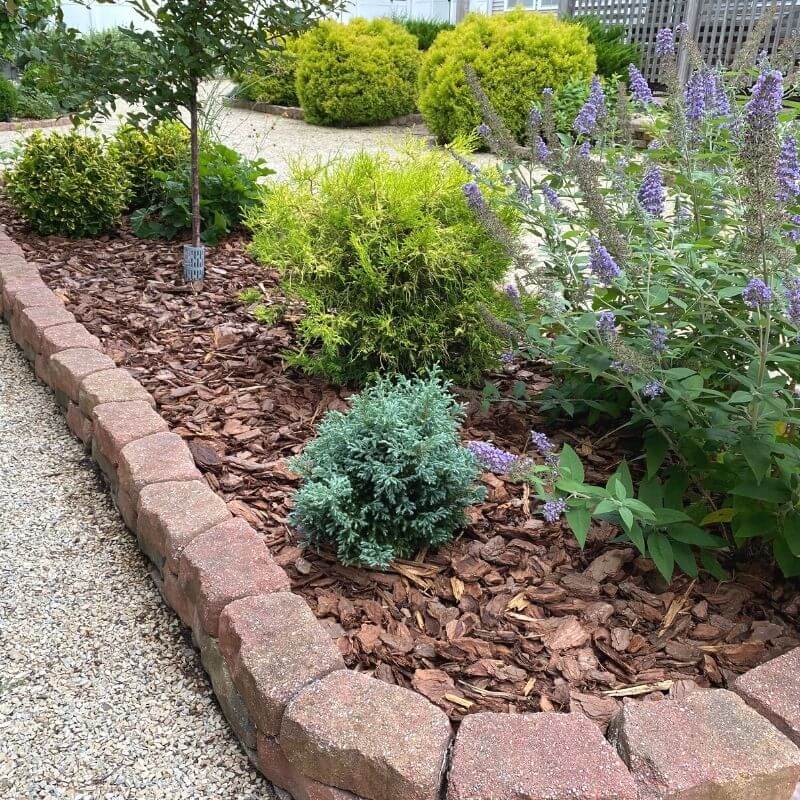
My video tour: How to plan a new garden
Here is my video tour so you can see my own example of how to plan a new garden bed. This was a fun project to put together precisely because I really did my research and made sure to plant things with similar growing requirements. Also important to me was having the plants be rabbit resistant, and if not, knowing how I could protect the plants from rabbit damage. I considered color, texture and bloom times. I also took into account what was blooming already in other parts of my backyard where this new garden bed is situated.
Let me know if you have any questions in the comments. Also let me know how you’ve planted your own garden beds. As home gardeners, we can always learn from each other!
Happy gardening!

Leave a Reply